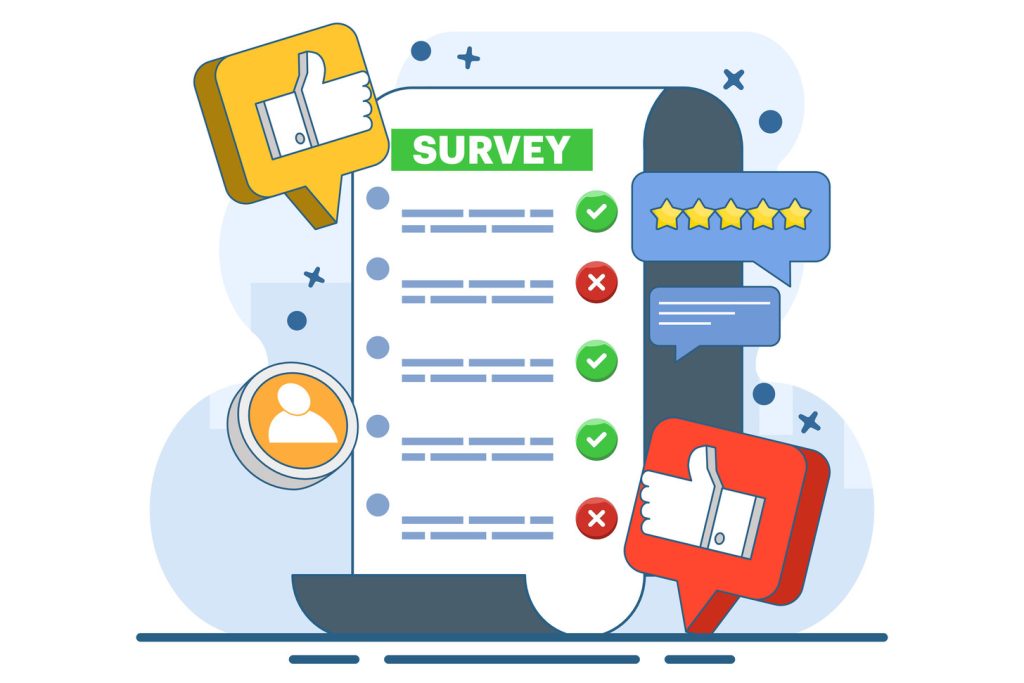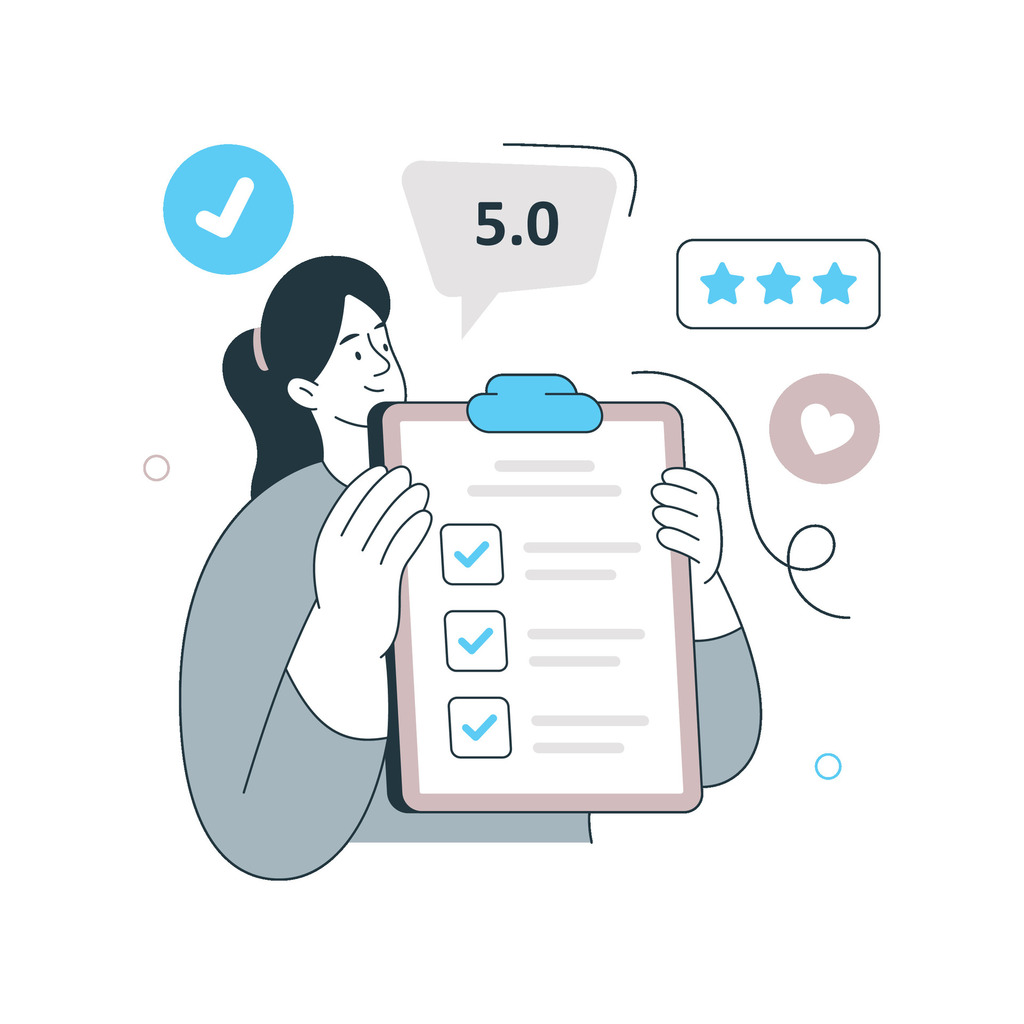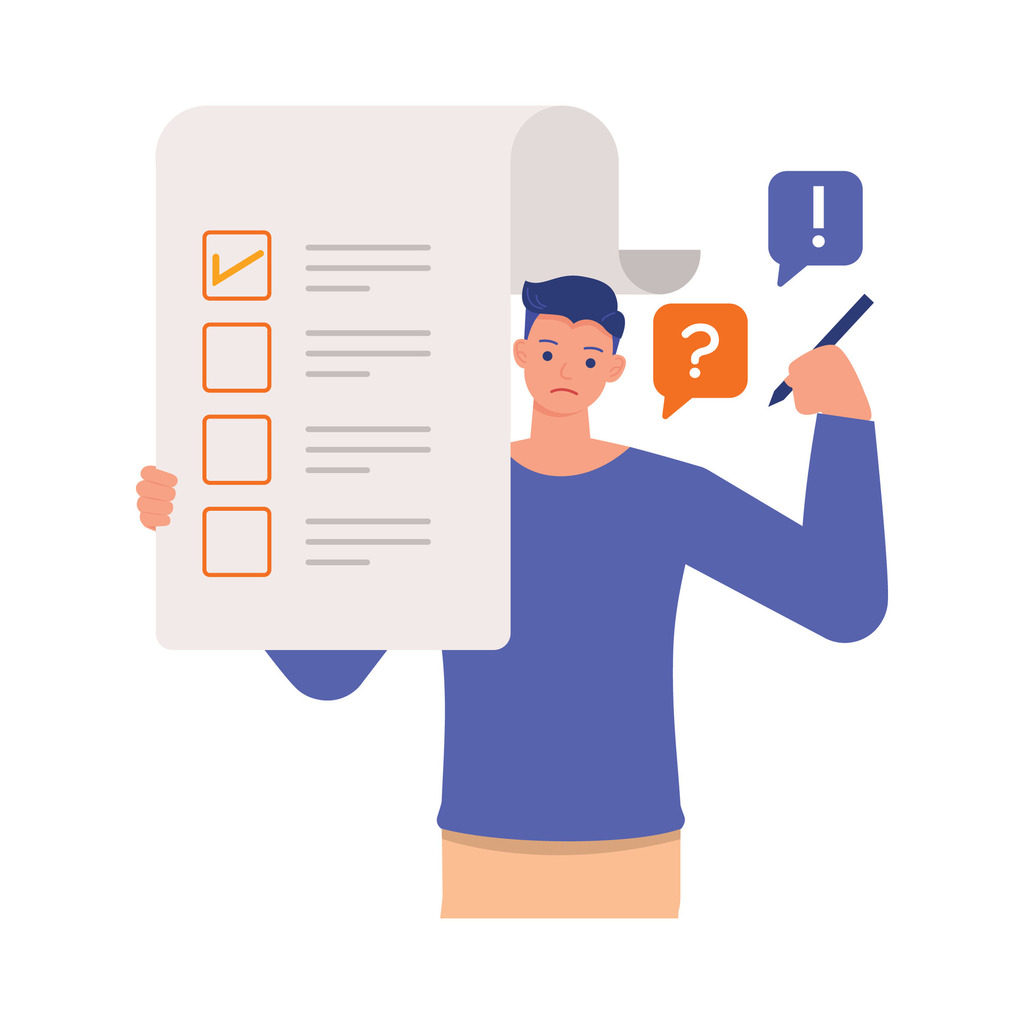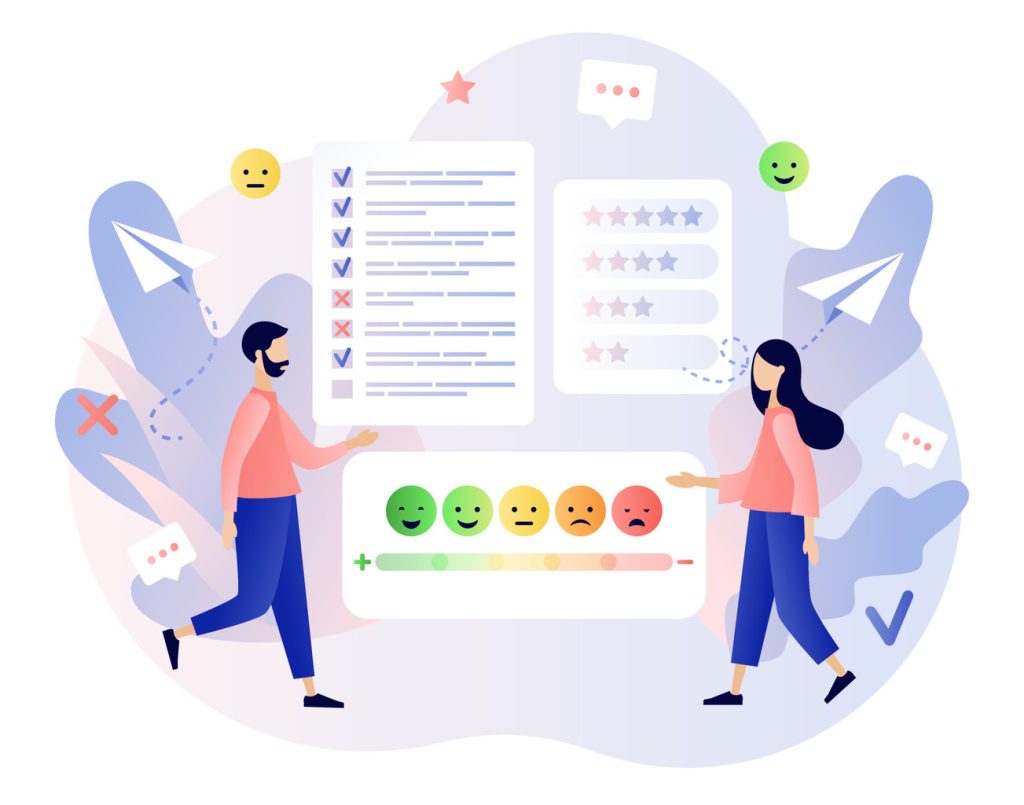Customer Satisfaction Surveys: Best Practices & Examples

Business leaders face a critical challenge: 53% of consumers report declining service quality, while half of CX teams claim improvements. This perception gap reveals why organizations need systematic methods to measure client sentiment. Well-designed feedback tools bridge this divide by converting subjective opinions into measurable data.
Effective evaluation strategies analyze experiences across every touchpoint. They identify trends in product interactions, support quality, and overall engagement. When implemented strategically, these methods uncover hidden pain points before they impact loyalty or revenue.
Recent studies show companies using structured feedback systems achieve 23% higher retention rates than competitors. The most successful organizations treat client insights as strategic assets – not just compliance metrics. They prioritize actionable intelligence over generic satisfaction scores.
Professional-grade survey design balances scientific rigor with practical application. It transforms raw responses into clear improvement roadmaps. Businesses that master this process gain advantages in competitive markets while building authentic client relationships.
Key Takeaways
- Strategic feedback collection bridges perception gaps between businesses and their audiences
- Multi-channel evaluation methods provide comprehensive experience insights
- Data-driven organizations outperform competitors in retention and growth metrics
- Professional survey design balances analytical depth with operational practicality
- Early trend detection prevents minor issues from escalating into retention risks
Understanding Customer Satisfaction Surveys
Accurate client insights form the backbone of strategic decision-making in competitive markets. Structured feedback tools transform subjective opinions into measurable data points, creating alignment between organizational efforts and audience expectations.
Core Mechanics and Objectives
These assessment systems capture perceptions across every interaction point – from product interfaces to support channels. Unlike generic questionnaires, they reveal operational strengths and pinpoint improvement areas through targeted inquiries. A retail executive notes:
“What gets measured gets managed. These tools turn vague complaints into precise action plans.”
| Focus Area | Traditional Methods | Modern Systems |
|---|---|---|
| Data Depth | Surface-level ratings | Predictive analytics |
| Response Time | Weeks to process | Real-time dashboards |
| Impact Scope | Isolated fixes | Strategic overhauls |
Driving Experience Improvements
Effective feedback loops enable organizations to detect friction points before they escalate. When a telecom company implemented sentiment-tracking tools, they reduced service complaints by 41% within six months. This approach converts raw data into:
- Priority lists for resource allocation
- Training programs addressing specific gaps
- Product enhancements matching user needs
By systematically analyzing feedback patterns, businesses maintain alignment with evolving consumer demands while optimizing operational efficiency.
The Evolution of Customer Satisfaction Surveys

Feedback mechanisms have undergone radical transformation since their inception. Early assessment tools relied on manual processes – paper forms mailed to households or distributed after transactions. These methods often yielded delayed insights and low participation rates.
Historical Trends
The shift from annual check-ins to constant monitoring revolutionized how organizations gather intelligence. Digital platforms now enable instant responses across websites, apps, and social media. This transition eliminated weeks-long data gaps, allowing real-time adjustments to operations.
| Aspect | 1990s Approach | Modern Practice |
|---|---|---|
| Response Speed | 6-8 week analysis | Instant analytics |
| Channel Diversity | Single method | Omnichannel deployment |
| Strategic Value | Basic metrics | Predictive modeling |
Mobile optimization represents the latest advancement in this evolution. Over 68% of feedback now occurs through smartphones, reflecting consumer preferences for on-the-go participation. A retail operations director observes:
“Our switch to SMS-based queries tripled response rates while cutting collection costs by half.”
Continuous improvement systems outperform traditional models dramatically. Companies using always-on feedback loops achieve 19% faster issue resolution than peers using quarterly assessments. This approach aligns resource allocation with emerging priorities rather than historical assumptions.
The progression toward predictive analytics marks the next frontier. Advanced tools now flag potential dissatisfaction triggers before clients disengage. This proactive strategy helps businesses maintain loyalty in competitive markets while optimizing operational efficiency.
Key Benefits of Customer Satisfaction Surveys
Organizations gain critical advantages through structured feedback systems. These tools fuel Voice of the Customer programs, aligning cross-functional teams around shared improvement goals. By capturing direct audience insights, businesses uncover operational blind spots while strengthening stakeholder relationships.
Boosting Client Loyalty
Regular feedback collection signals genuine commitment to audience needs. When a major retailer implemented quarterly sentiment checks, repeat purchase rates jumped 34% within a year. A CX strategist notes:
“Consistent listening builds emotional equity – clients reward brands that evolve with their preferences.”
This approach transforms casual users into brand advocates through demonstrated responsiveness. Companies addressing concerns within 48 hours see 29% higher lifetime value than slower responders.
Driving Organizational Growth
Actionable insights directly impact revenue streams and market positioning. Data patterns reveal untapped opportunities – from service upgrades to niche market expansion. Consider these impacts:
| Metric | With Feedback Systems | Without Systems |
|---|---|---|
| Annual Retention | 82% | 67% |
| Upsell Success | 41% | 19% |
| Issue Resolution Speed | 6.2 hours | 38 hours |
Proactive organizations using these tools achieve 3x faster product iteration cycles. They align resources with emerging priorities rather than relying on outdated assumptions.
Crafting Effective Survey Questions

Strategic question design separates useful feedback from generic data. Organizations must balance industry benchmarks with unique operational needs to create assessment tools that drive measurable improvements.
Foundational Inquiry Frameworks
Standardized questions establish performance baselines across key areas. Examples include rating scales for product quality and open-ended prompts about service experiences. A financial analyst notes:
“General queries reveal broad trends, but real breakthroughs come from layered questioning.”
Effective formats avoid yes/no traps. Instead, they use scaled responses capturing intensity of sentiment. This approach identifies subtle shifts in audience perceptions over time.
Sector-Specific Question Design
Tailored inquiries address unique challenges in vertical markets. Healthcare providers might ask about appointment wait times, while ecommerce platforms focus on checkout processes. Consider these contrasts:
- Banking: Clarity of fee structures vs retail: product return ease
- Education: Course relevance vs hospitality: staff responsiveness
Industry-aligned questions yield precise insights. They expose friction points competitors often miss. Proper sequencing maintains engagement – critical questions appear first when attention peaks.
Advanced tools now suggest question variations based on response patterns. This dynamic approach adapts to individual experiences while maintaining data consistency across participants.
Best Practices for Designing Surveys
Survey effectiveness hinges on balancing data needs with respondent experience. Research by SurveyMonkey reveals a 30% drop in completion rates when assessments exceed seven minutes. Optimal tools deliver insights without taxing participants—three to five minutes and under 10 queries strike the ideal balance.
Avoiding Common Pitfalls
Clear objectives prevent scope creep. Start by defining which decisions the data will inform. A telecom firm reduced irrelevant questions by 60% using this approach, boosting response accuracy.
Forced-choice answers distort results. Restrictive options like “satisfied/unsatisfied” miss nuanced feedback. Open-ended follow-ups after rating scales capture richer context while maintaining structure.
| Design Element | Effective Approach | Common Mistake |
|---|---|---|
| Length | 3-5 minutes | 15+ questions |
| Question Structure | Single concept per item | Double-barreled queries |
| Response Options | 5-point scale + “N/A” | Binary choices |
Leading language skews outcomes. Phrases like “How excellent was…” prime respondents. Neutral wording like “Rate your experience” yields authentic feedback. A retail analyst notes:
“Our redesigned surveys exposed a 22% shipping delay issue competitors hadn’t detected.”
Mandatory fields should cover only critical data points. Allowing skips respects diverse experiences while reducing abandonment. Post-survey action plans prove more impactful than perfect designs—79% of users expect visible improvements within 90 days.
Customer Satisfaction Surveys: Essential Elements

High-impact evaluation tools require precise architectural planning. Effective instruments combine strategic alignment with respondent-friendly design, transforming raw input into operational blueprints. Three critical elements ensure consistent results across industries and audience segments.
Structural Foundations for Reliable Insights
Purpose-built questions drive measurable improvements. Each inquiry must link directly to organizational goals while maintaining conversational clarity. A retail operations manager confirms:
“Our redesigned format increased response rates by 40% through focused, relevant queries.”
Balanced scales capture nuanced perspectives without cognitive overload. Five-point systems outperform binary choices, revealing intensity differences that guide resource allocation. Pair numerical ratings with optional comment fields to capture unexpected pain points.
Demographic filters enable granular analysis across user groups. Age, location, and purchase history categories help identify patterns in experience quality. This approach helped a software company reduce churn by 28% through targeted feature updates.
| Element | Impact | Implementation Tip |
|---|---|---|
| Question Flow | 37% higher completion rates | Group related topics sequentially |
| Language Simplicity | 52% fewer abandoned surveys | Use 8th-grade reading level |
| Progress Indicators | 29% faster responses | Show completion percentage |
Strategic open-ended prompts uncover hidden improvement areas. Position these after rating questions when participants have context. Limit free-text fields to 1-2 per assessment to maintain structure while gathering qualitative data.
Industry-Specific Survey Questions
Tailored inquiries drive meaningful improvements across sectors by addressing unique operational challenges. Generic feedback tools often miss critical pain points that impact loyalty in specialized markets. Precision-crafted questions reveal actionable patterns competitors overlook.
Financial and Healthcare Focus
Banking assessments should evaluate application simplicity and fee transparency. One regional credit union discovered 31% of members struggled with digital onboarding through targeted queries about online processes. Healthcare providers benefit from asking about:
- Wait time accuracy versus scheduled appointments
- Clarity of treatment explanations from staff
- Facility hygiene standards during visits
“Our patient experience scores improved 27% after adding medication instruction clarity questions,” notes a hospital quality director.
Retail and Hospitality Priorities
Ecommerce platforms require different metrics than physical stores. A/B testing revealed questions about checkout error frequency identified 18% more usability issues than general satisfaction ratings. Hospitality leaders should assess:
| Ecommerce | Hospitality |
|---|---|
| Cart abandonment reasons | Room readiness timelines |
| Search filter effectiveness | Amenity maintenance frequency |
Restaurant operators gain crucial insights by measuring server attentiveness against peak hour demand. This approach helped a national chain reduce complaint resolution time by 43% through staff training adjustments.
Utilizing Satisfaction Survey Templates

Professional survey templates accelerate feedback processes while maintaining research integrity. Platforms like SurveyMonkey offer methodologist-certified frameworks for measuring product quality, service interactions, and B2B relationships. These ready-made tools eliminate guesswork while allowing strategic modifications.
Tailoring Foundations for Precision
Effective customization starts by mapping template questions to specific business goals. A hospitality chain might add check-in experience ratings to a standard service assessment. Retailers often include product return ease metrics. One survey designer notes:
“Templates provide 70% of what most companies need – the magic happens in the remaining 30% of tailored queries.”
Advanced adaptation techniques maintain methodological validity while capturing unique insights. Skip logic routes users to relevant follow-ups based on initial responses. Conditional questions appear only when specific criteria meet thresholds. These features help organizations gather targeted data without overwhelming participants.
Brand-aligned language strengthens connection without compromising clarity. A financial services firm increased response rates by 22% using terms like “wealth management” instead of generic “banking” references. Balance customization with consistency – comparable data across periods drives trend analysis.
Strategic template use combines efficiency with depth. Organizations save 40+ hours in design time while building insights that generic tools miss. The key lies in purposeful modifications that respect research principles while addressing operational realities.
Scales and Metrics for Survey Success
Measurement frameworks determine whether feedback initiatives drive meaningful change. Three industry-standard tools help organizations quantify experiences and prioritize improvements strategically.
Core Experience Indicators
The CSAT metric evaluates specific interactions using a simple five-tier scale. By asking “How would you rate this experience?” teams identify immediate pain points. Calculations focus on positive responses – scores above 80% signal strong performance.
Net Promoter Score (NPS) reveals long-term loyalty through one question: “How likely are you to recommend us?” Ratings from 1-10 categorize users as promoters, passives, or detractors. Companies with top-tier NPS grow 2.5x faster than competitors.
Customer Effort Score measures friction in processes like returns or support requests. Low-effort experiences correlate with 94% higher repurchase intent. This metric highlights operational bottlenecks needing simplification.
These scales transform subjective opinions into comparable data. When combined, they provide a 360-degree view of audience sentiment – from instant reactions to enduring loyalty drivers. Strategic teams use this triad to align resources with proven impact areas.

